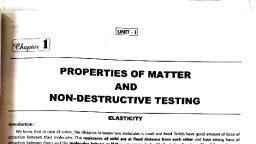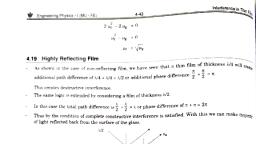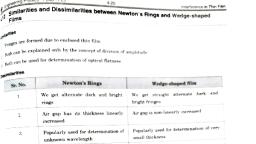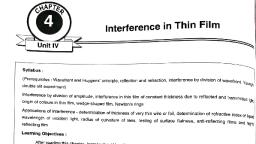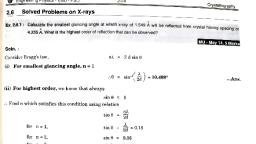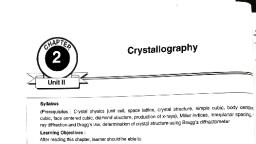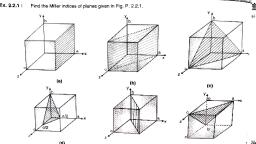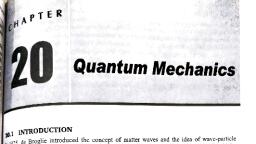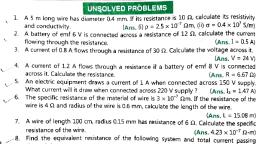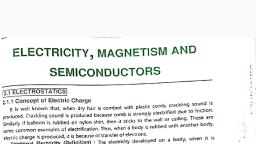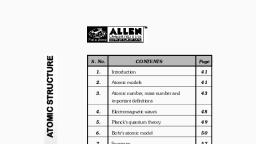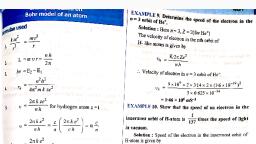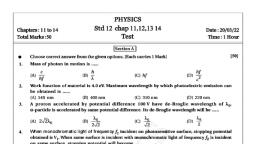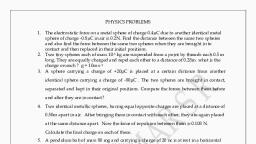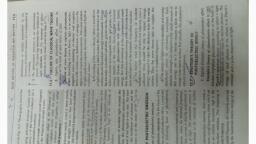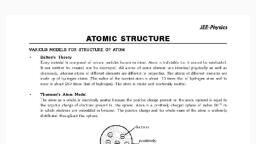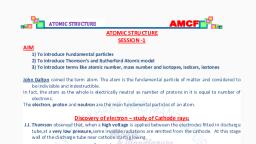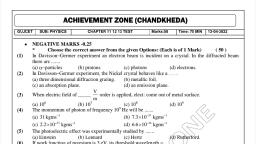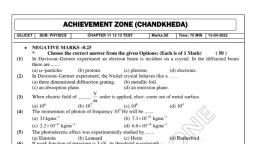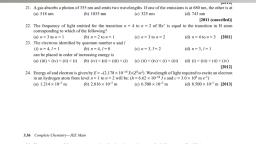Page 2 :
eae i, gineering Physics - | (MU - F.E.), , «. Formula 4, , 6.63 x 10-**, ~ 4/2 x 6.68 x 10-27x 2 x 1.6 x 10° x 200, , , , Ex. 1.5.2:, 10° m/sec. Comment on your answer., Soin. :, Given:, m=, v=, oA =, , Calculate the wavelength of de-Broglie waves associated wi, , reeled ie, , -.-Ans,, , , , oving with a speed o, , , , ith mass 1 kg m, , 7.17x 10°18 m, , 1kg, 1 x 10° m/sec, , “h 6.63x 10°, mv~ 1x1x 10°, ..-Ans,, , 6.63 x 10°*7 m, , This wavelength is too small to have any practical significance., , , , A bullet of mass 40 g and an, , electron, both travel at the velocity of 1100 m/sec. What wavelengths can be, , aled through diffraction effect ?, , Ex. 1.5.3:, associated with them? Why is the wave nature of the bullet not reve, Soln. :, Given :, Mass of bullet = 40x 10-%kg, Velocity of bullet = 1100 m/sec, Mass of electron = 9.1x 10-1 kg, ~. Let wavelength associated with bullet be Ag, h, de = mv, 6.63 x 10-54, 40x 10x 1100 = 15% 10% m, Let wavelength associated with an electron be A,, h, de = inv, _ __ 6.63 x 10-9, 9.1 x 10- x 1100 = 6-62 x 10°", m = 662, 0A Ans., , Since the wavelength associated with a bullet is i easured with the hi, / : i ‘ too small, it cannot be m i ip, diffraction effect, as it requires an obstacle of the dimensions of the order of Favelengily ued sh the help o, ‘, , Ex, 1.5.4:, reflection ocours? Lattice spacing = 2.15 A., , Electrons accelerated through 100 V are reflected from a crystal. What is the glancing angle at which the first, , Ore, , , , TechKnowledg#, , Publications
Page 4 :
Quantum Physicy, =, , 4-12 :, jose de-Broglie wavelength is 5000 A., , , , YF Engineering Physics - | (MU- FE.), , Ex. 1.5.7: Calculate the kinetic energy of an electron wh, , , , Soin. :, Given:, m, = 9.108 x 10” ke, h = 6.625 x 10° *4 J.sec., n=1,, x = 5000A, To find: KE. =?, Using formula,, h, A = Jame, h2, “E = oma?, (6.626 x 10° 4?, = Fx9.108 x 10% (5000 x 10-*°)?, = 9.6378 x 10-5 J = 6.023 x 10°° eV ---Ans., Ex. 1.5.8: Whatis the wavelength of a beam of neutron having, (1) anenergy of 0.025 ev?, (2) anelectron and photon each have a wavelength of 2A, what are their momenta and energies?, Mass of neutron = 1.676 107” kg, Mass of electron = 9.1 x 10°" kg, ‘ 34, Pri contn As AG ae, Soin. :, Given :, mM, = 1.676x 10" kg, me = 9.1x10-“kg, h = 6.625 x 10-%, Part 1: see., Given:, , Energy = 0.025 eV = 0.25 x 16x 10-19J, , To find : Neutron’s wavelength, h, , i, , 2mE, 6.625 x 10-34, , = eee a aa, V2 x 1.676 x 10-27 0.025 x 1.6 x 10-19, , = 1.709x 10-9 m, 4 = 1.7094, .-Ans., , ee, TechKnowleds?, , Publication’
Page 5 :
—, , epmepm tow re) ag ner, Qi, Ee an electron with wavelength 2A, h? 1 2, E=->o, 22°2m (using formula E = x), - (6.625 x 10-2, , ——_ (6.625 x 10-4), (2x10? y9y91x 10-71, , = 6.028x 10-8 = 37.68 w, Momentum of electron, , !, i>, , 2x10”, , = 3.3125 x19-™ Kem, sec, For a photon :, , Energy, , ", >, <, , he 6.625 x 10-3 x 108, , = Oh 2x10”, , , , 9375 x 10-16 J, , Momentum, , 9., h kg.m, = 3.3125 x 10° nee, , Ex. 1.5.9: If the particles listed below all have the same energy, which has the shortest wavelength - electron,, o-particle, neutron or proton?, , Soin. : Particles with same energy a-particle; neutron; proton, , m, , o-particle has the highest mass among all others. It will have the shortest wavelength., , as Ah «, , , , Ex.1.5.10: Calculate the energies in eV of an electron and a proton whose de-Broglie wavelength is 1A., Soln. : Energy for electron, h2, E = 32m, (6.625 x 10-4)?, = Gx 10° Px 2x 9.1% 10%, , 2.41 x 10-17 J = 150 eV, , Energy of proton, , (6.625 x 10-4)? = 1.32% 10° J, x 10° 10)2 2 x 1.66 x 10” a, , 1, , = 0.08eV

